The Formless and The Functionless: Queering the Art of Conversation
Brian A Horton
12 November 2016
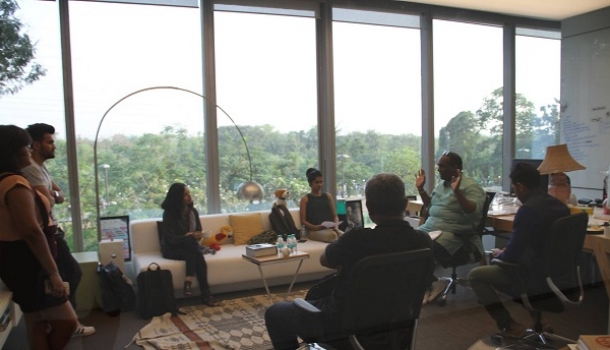
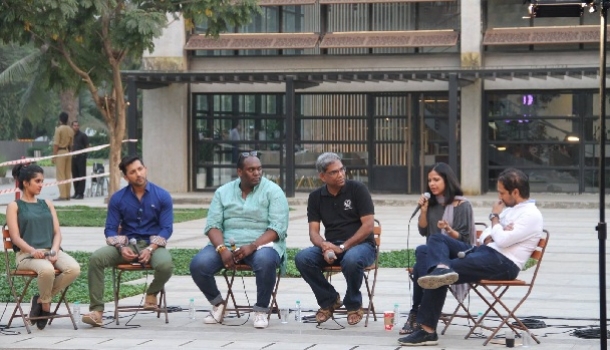
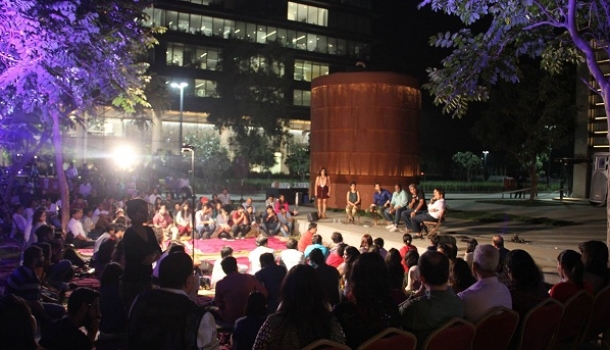
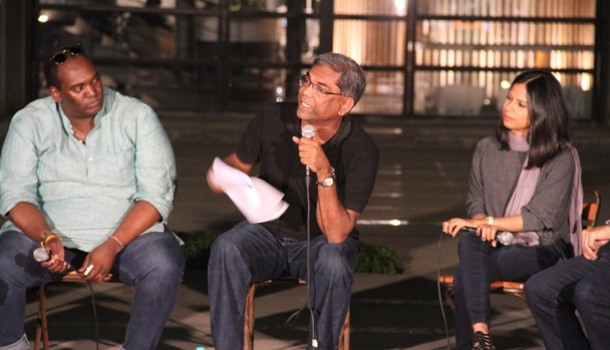
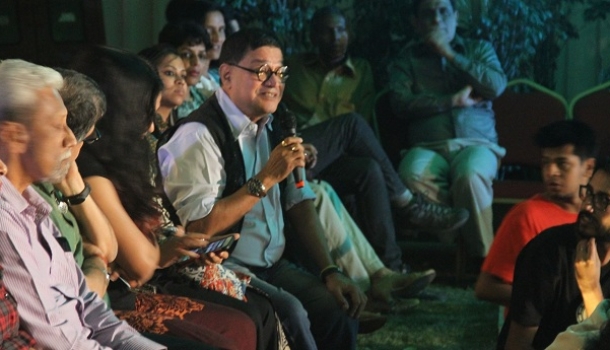
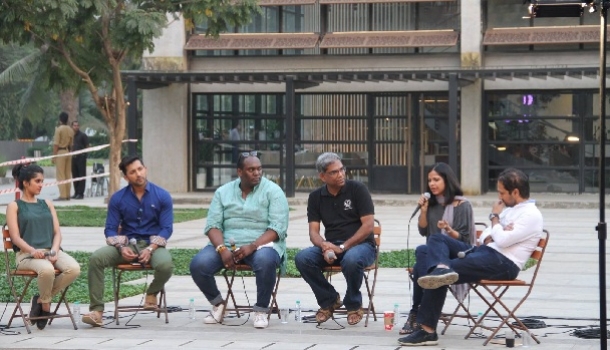
How do you curate a conversation? Specifically, how can one curate an adda? If an adda is simply an unstructured, casual conversation between friends[1], then it might seem strange to propose it as an event for a cultural lab housed within a corporate institution. The art of leisurely conversation with no real direction might fall silent in a space governed by monetized time, regimented schedules, and corporate austerity. As one of the shadier posts on our event page announcing the event read, “This seems really mainstream”.
And perhaps the accusation of corporate normativity dressed up as subversive subculture does have a stale, and even inauthentic air about it. After all, the juxtaposition between a free flowing, aimless conversational form and a space steeped in utility, profit, and function is indeed a queer marriage.
From Subcultures to SabCulture: A Public Adda on Newness in Contemporary India at Godrej India Culture Lab was in many ways an experiment in the art of conversation. It was experimental in so far as it asked both the audience and the speakers to move beyond their comfort zones both performatively and ideologically. From the intense discussions that took place between all of the speakers on the subject of capitalism to the indefiniteness of who was supposed to speak and when, the adda dared all that were present to inhabit a space of discomfort and uncertainty in the name of exploration.
If we think about curating any event, lecture, or talk as a conversation, then naturally these various modes of public communication should also follow our general expectations for a conversation: form and function. Where form is concerned, a conversation often follows a particular pattern. It has a clear direction. This form is often reciprocal: you speak and I listen or you make a point and I respond. Form not only orders conversation but also the promise of form assuages us from the messiness of communication without boundaries.
Where function is concerned, conversation is often expected to lead somewhere, to have a clear direction or end point. At this particular moment in history when ‘time is money’ and ‘talk is cheap’, function and utility are integral parts of how we come to invest as well as orient ourselves to the things around us. How will this help me? Will I find this useful? What is the point? Such questions animate not just how we think about managing our time but also our communication. Thought this way, a talk should have a point, a clear message, a bottom line - otherwise it is a failure. If there is no meaning or purpose to derive, then why do it?
Therefore, an adda is a troubling, and perhaps even seditious mode of communication, precisely because it evades the maxims of form and function.
It adheres faithfully to nothing other than the willingness of the participants to continue. In more recent parlance it has led some to suggest that an adda cannot be serious, that it is merely timepass. However, what does it mean to converse without boundaries or the pressure of making meaning? Is there not something implicitly serious—let alone political—in the project of doing an adda?
I raise this question precisely because the trajectory of my scholarship has encountered a problem similar to the adda: form and function. Since 2013 I have been interviewing LGBTQ+[2] individuals in Mumbai as well as documenting the histories of the various sexual minority communities in Mumbai. My work broadly explores how LGBTQ+ subcultures are imagining themselves (and are being imagined by the state) as becoming public culture.
The term subculture is an important one where my work is concerned, because it indexes the ways in which LBGTQ+ populations are often sidelined from being a part of mainstream conversation, specifically because they do not adhere to either the form or function of mainstream society. From being labeled as abnormal to un-Indian, LGBTQ+ persons are often accused of being unstable, sick, mentally ill, or so tainted by western culture that they do not adhere to the norms of Indian society.
Such a polemic against LGBTQ+, whether launched by quack doctors or the Baba Ramdevs of the world, accuses LGBTQ+ persons of being outside of the form of Indian society. To speak of sex, let alone sexuality that seeks an escape from compulsory heterosexuality, is itself at the heart of challenging not just the kinds of love that are socially accepted but the very meaning of love as a social feeling.
At the same time, LGBTQ+ persons disrupt very specific questions about function. Marriage and reproduction have historically been deeply linked to understanding concepts of a person within Indian society. Whether we talk about caste, religion, or even the norms around gender, marriage and reproduction constitute both essential life cycle rights as well as the very essence of how an individual is socially constructed. LGBTQ+ persons (in addition to numerous others who opt out of traditional expectations for marriage and reproduction) are often perceived as challenging the very function of social order — or perhaps worse, accused of having no function at all.
Many of my interlocutors, particularly those courageous enough to speak publically about their identities, are asked random questions from ‘who is the man and who is the woman in a gay/lesbian relationship’ to ‘how do you all have sex’ to ‘but why can’t you get married anyway’?
The experiences of my interlocutors from field research are in some ways deeply in step with how academicians have historically documented the lives of LGBTQ+ people globally. Being queer, is not just a declaration of sexual object choice or gender identity. It is also a politics of questioning the structures that produce norms around gender, sexuality, and various other institutions. Social form and individual function then are merely placeholders for a range investments that individuals are expected to make towards mainstream notions of love, desire, and what constitutes a livable life. Where the event was concerned, I also thought it was important to play with norms not just from the perspective of how they emerge through sex and gender in my work, but also in the ways that I present my work and who I am in conversation with.
When Godrej India Culture Lab approached me to organize an event that reflected my work, I also thought that in a similar vein, the form and function of what an event is could also be tested. After all, the Culture Lab is a space that is similarly invested in thinking about the indefiniteness of the times we are living in. As Parmesh always asks ‘What does it mean to be modern and Indian’? Such a question is not one that evokes an easy answer. Instead it incites a series of follow up questions: Modernity on whose terms? When did we become modern? Which ‘India’ are you referring to?
I knew that I did not want to have a panel. I was terrified of people just sitting in the front and talking indirectly. Also, instead of calling panelists that were immediately aligned with my work, it was important to broaden the scope of the conversation to include people that have virtually nothing to do with my immediate research areas. Our only unifying factor was that in each of our different disciplinary silos we are engaging with a question around subculture.
When you grapple with difficult ideas, be they about caste, sexuality, disability, or everything in between, talking generally to an audience can be a missed opportunity to really feel the weight of a point. I wanted to create a space that was at once relaxed and discomforting. I wanted people to be able to speak openly and honestly but also to be challenged in a way that left them feeling uncomfortable.
One of the reporters on the phone asked me the other day ‘what are the questions you plan to ask and the topics you will discuss’? In truth I did not know. And I still am not entirely sure what I wanted out of the event. I knew where I wanted the conversation to start but I was not sure where it would end up.
As I sat with the panelists before the event, the question that seemed to be on everyone’s mind was ‘why’?
As some frantically looked through sample questions and topics I had emailed out, there seemed to be not just an uncertainty about the form of the conversation, but it’s function. As Sandeep even joked, he was not sure why he was there. As a venture capitalist he felt that he would be the outsider. But he was instead a catalyst into some superb points of conversation particularly around the ways that capital can be a lightning rod for expanding subculture.
This sparked an intense debate between all of us about the ways in which technology and the monetization of culture can sometimes lead to making certain cultures stagnate. Where Pearl was concerned, this was particularly true in the context of music and its mass marketing. Kalyani and Terence also weighed in expressing ideas about how capital can be a mechanism both for inclusion and bringing more new ideas to the table. In all these discussions there was no mention of points, or bottom lines, or direction. Throwing function to the wind actually made it easier for us to move in directions that neither of us—myself included—could have possibly anticipated.
AF Mathew’s directness dared not just the panelists but also the audience to feel the weight of his message about the prevalence of caste. As he read off statistic after statistic about the manifold ways in which casteism persists in India—no matter how much our liberal sensibilities may suggest that it is a vestige of ‘pre-liberalized’ India—you could feel a hush fall over the audience.
Despite the colored lights, the light breeze, and the air of joviality, this adda had broken and disrupted the form not just of the conversation but also our right to be comfortable in our positions. Not knowing when to interject or whether to allow him to continue listing statistic after statistic of atrocities committed against Dalits, I realize that the lack of a form, a regimented structure, created a beautiful opportunity for Mathew to undo the audience’s neat and comfortable ideas about the ways power and marginality work in India, challenging them to confront not only their own complicity but how their own aversion to caste talk may be part of the problem.
Godrej Culture Lab’s work often raises more questions than it can possibly answer. From Dancing Queens to Museum of Memories to Vikhroli Skin, Culture Lab has sought to explore new mediums, new thinkers, and new ideas. As the curator for Culture Lab’s very first adda, I thought that it would be important to also think about ways to continue the Lab’s work of trying to push boundaries. What I was attempting to curate was not a talk, nor was it even a panel, where we pass the question and answers back and forth. An adda in the truest sense of the word is a conversation.
I hope that this adda expanded the medium of conversation at Godrej India Culture Lab. If I am lucky it may have perhaps even queered the kinds of conversation that happen in Culture Lab. This is not by adding to it some sort of radically new sexual and gender politics to the Lab space. But rather by exploring mediums of engagement that do not purport to have a definite form or function. Instead, I sought to create an adda that invites the intersection of debate, critique, agreement, and perhaps even silence, allowing the audience and the panelists to make their own conclusions about what happened, what ideas to take away, and what to think next. Walking away from almost two hours of intense conversation, I feel as though our adda invited the pleasures of the formless and the functionless, while also asking people to inhabit the space of uncertainty and discomfort. And that juxtaposition between the pleasures of discovering the unknown and the discomfort with the uncertain is precisely the kind of queer feeling that accompanies the project of doing something new.
[1] See Chakrabarty, D. (2000). ‘Adda: A History of Sociality.’ In Provincializing Europe. Princeton: Princeton University Press: 180 – 213.
[2]Lesbian, gay, bisexual, trans*, queer, plus individuals. The plus denotes other identities that may fall within the domain of queer but are not explicitly named. I would also emphasize here both the imperfection of any term to fully capture the complexities of counter heteronormative sexual and non cis-gender practices
The Subcultures to SabCulture adda video is up now! Watch it here.

